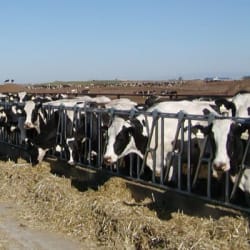Images
About this Course
Not so long ago, it was almost guaranteed that you would die of an infectious disease. In fact, had you been born just 150 years ago, your chances of dying of an infectious disease before you’ve reached the tender age of 5 would have been extremely high. Since then, science has come a long way in understanding infectious diseases – what they are, how they spread, and how they can be prevented. But diseases like HIV/AIDS, Malaria, Tuberculosis, or the flu are still major killers worldwide, and novel emerging diseases are a constant threat to public health. In addition, the bugs are evolving. Antibiotics, our most potent weapon against bacterial infections, are losing their power because the bacteria are becoming resistant. In this course, we’ll explore the major themes of infectious diseases dynamics. After we’ve covered the basics, we’ll be looking at the dynamics of the flu, and why we’re worried about flu pandemics. We’ll be looking at the dynamics of childhood diseases such as measles and whooping cough, which were once considered almost eradicated, but are now making a comeback. We’ll explore Malaria, and use it as a case study of the evolution of drug resistance. We’ll even be looking at social networks – how diseases can spread from you to your friends to your friends’ friends, and so on. And of course we’ll be talking about vaccination too. We’ll also be talking about how mobile phones, social media and crowdsourcing are revolutionizing disease surveillance, giving rise to a new field of digital epidemiology. And yes, we will be talking about Zombies – not human zombies, but zombie ants whose brains are hijacked by an infectious fungus. We’re looking forward to having you join us for an exciting course!
Subtitles available in English
20 hours of videos and quizzes
Similar resources
Our ideals stem from our origins as Pennsylvania’s sole land-grant institution, which allow us to continue to bring positive impact to humanity through our teaching, research, and engagement mission. And across the world is a community of Penn Staters—more than half a million strong—driven by that same spirit to serve our local and global communities.
From access to state-of-the-art resources to interdisciplinary pursuits in collaborative atmospheres, a Penn State degree is more than an education. The experiences and knowledge gained here will form the foundation for the lives our students build. Their contributions to the world begin with a Penn State degree.
As Pennsylvania’s largest public university, Penn State educates nearly 100,000 students each year—including first-generation college students and adult learners. Outside of the classroom, students have opportunities to round out their education through entrepreneurship, philanthropy, research, internships, and more.










